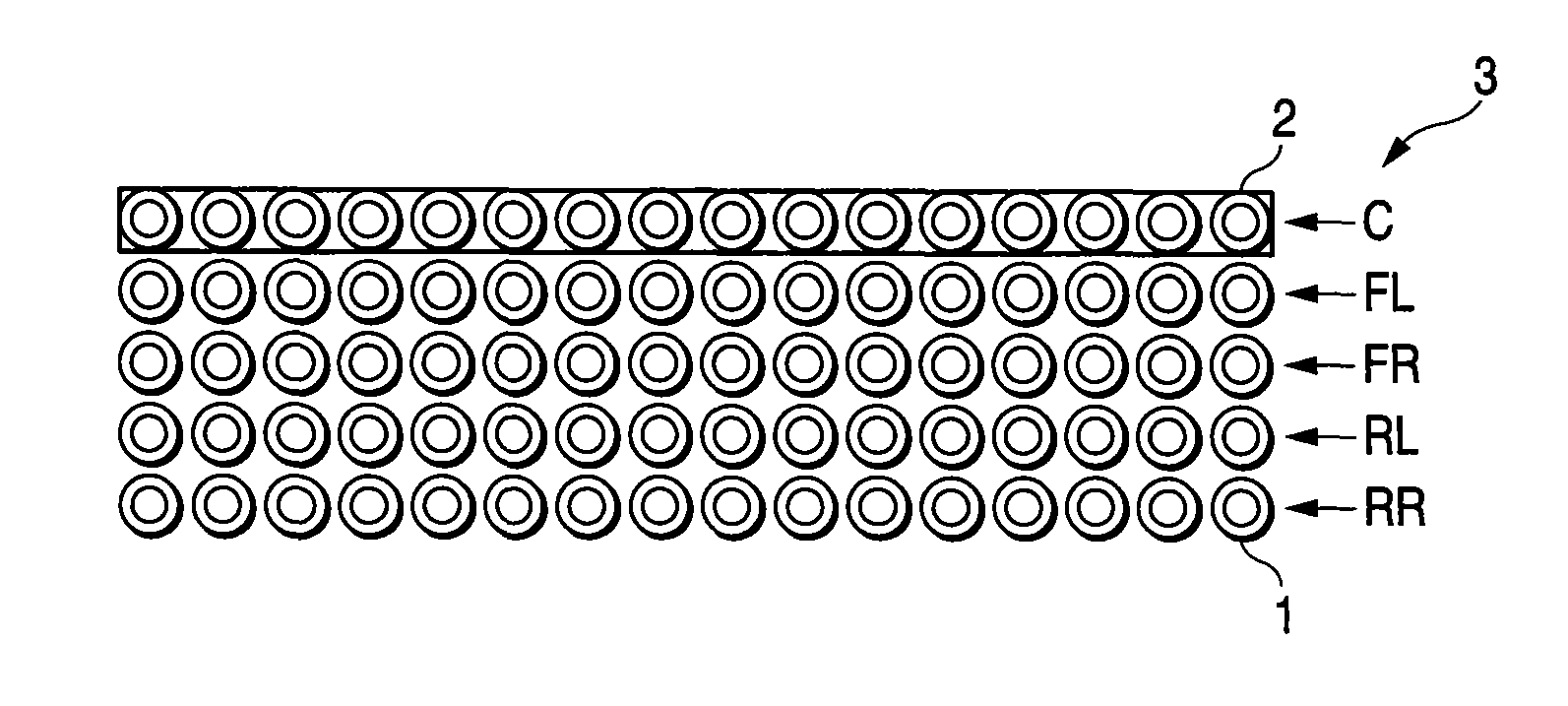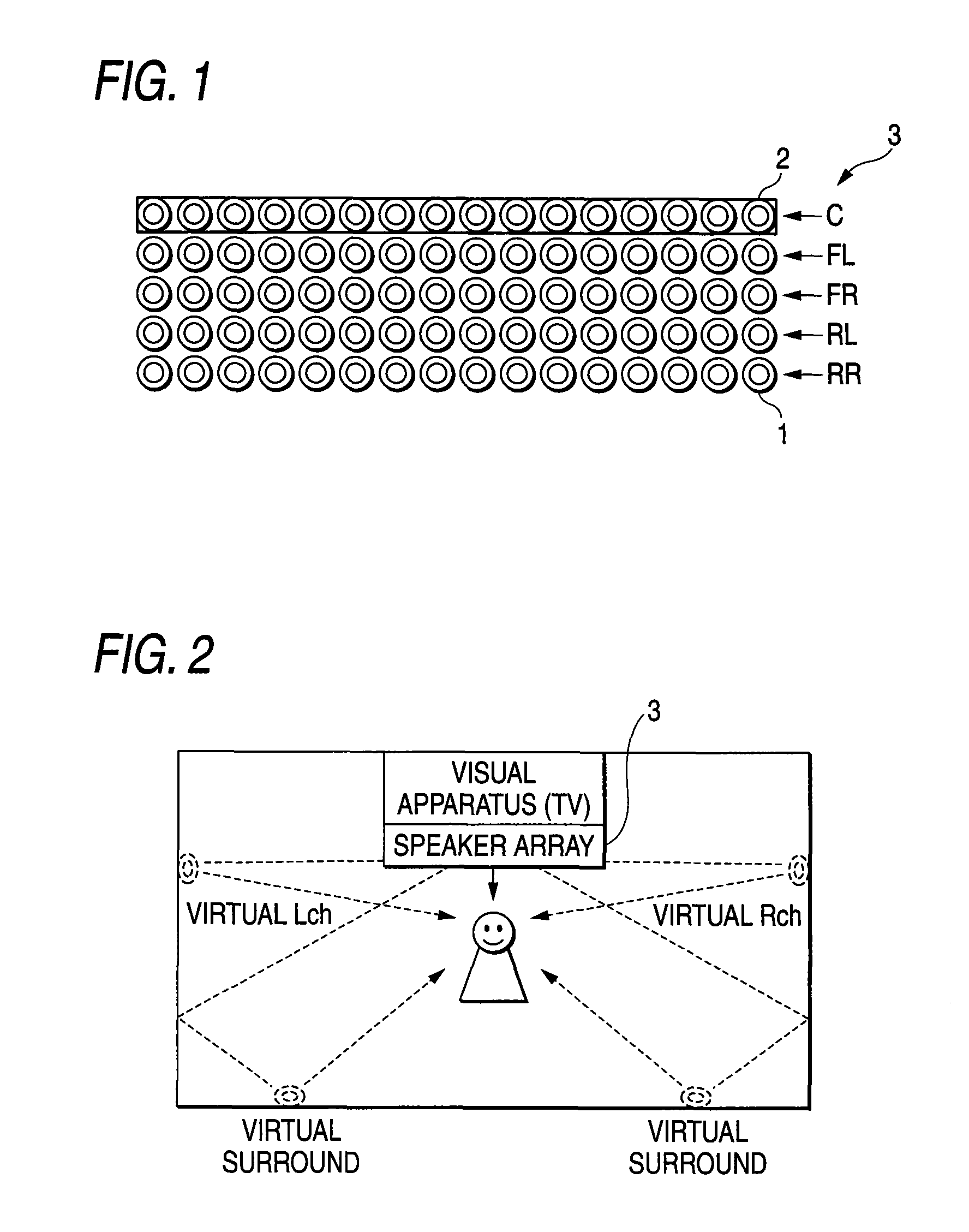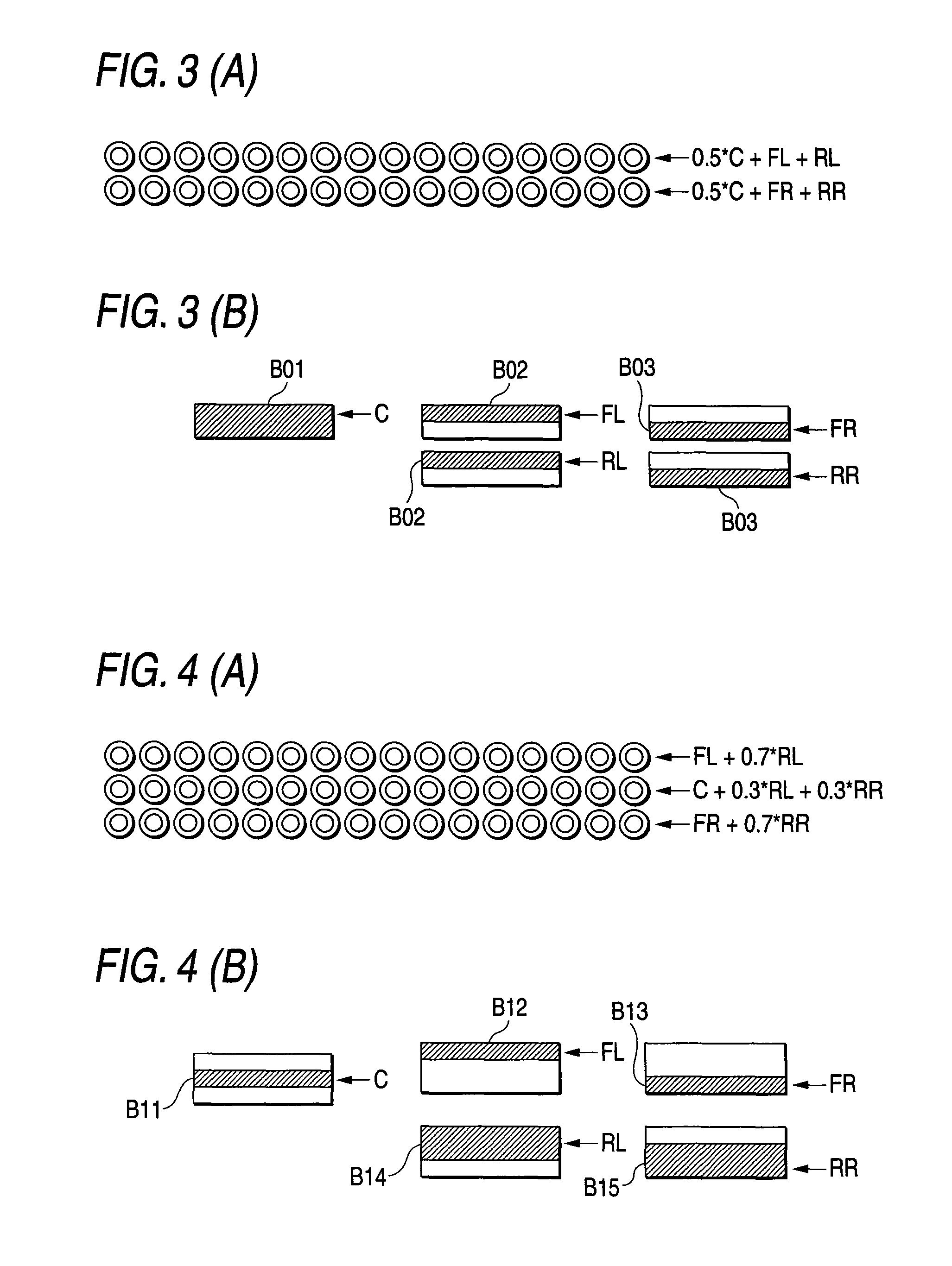Loudspeaker apparatus
a technology for loudspeakers and amplifiers, applied in the direction of transducer casings/cabinets/supports, stereophonic arrangments, electrical transducers, etc., can solve the problems of poor conversion efficiency, insufficient output sound volume, and increased number of loudspeakers, so as to achieve efficient practical use
- Summary
- Abstract
- Description
- Claims
- Application Information
AI Technical Summary
Benefits of technology
Problems solved by technology
Method used
Image
Examples
Embodiment Construction
[0042]Referring to the drawings, a description will be given of the embodiments of the invention. It should be noted that in the embodiments described below the loud speaker elements refer to individual loudspeakers, and a loudspeaker array means one which is constructed by arranging a plurality of loudspeaker elements. In additions a loudspeaker block is a section which is formed by a portion or the whole of the loudspeaker array, and an audio signal for each channel or each frequency band is inputted thereto.
[0043]FIG. 1 is a diagram illustrating a loudspeaker apparatus in accordance with a first embodiment of the invention. The loudspeaker apparatus consists of a loudspeaker array 1 and an audio signal processing unit, but in this diagram the LOUDSPEAKER APPARATUS refers to the loudspeaker array 1 and a loudspeaker block assigned to the loudspeaker array 1 by the audio signal processing unit. The loudspeaker array 1 consists of 5-stage loudspeaker rows 2 (2-1, 2-2, 2-3, 2-4, and ...
PUM
 Login to View More
Login to View More Abstract
Description
Claims
Application Information
 Login to View More
Login to View More - R&D
- Intellectual Property
- Life Sciences
- Materials
- Tech Scout
- Unparalleled Data Quality
- Higher Quality Content
- 60% Fewer Hallucinations
Browse by: Latest US Patents, China's latest patents, Technical Efficacy Thesaurus, Application Domain, Technology Topic, Popular Technical Reports.
© 2025 PatSnap. All rights reserved.Legal|Privacy policy|Modern Slavery Act Transparency Statement|Sitemap|About US| Contact US: help@patsnap.com



